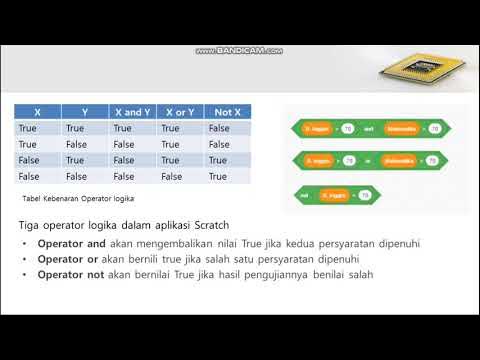Qué son tablas de verdad y compuertas lógicas | PlatziLive
Summary
TLDRThe video delves into the intricacies of logical conditions and programming structures, using relatable scenarios like determining whether to take an umbrella based on weather conditions. It emphasizes the importance of writing clear and readable code through nested conditions. A practical example involving bank transfers illustrates complex logical checks necessary for transaction approvals, such as account verification and sufficient balance. The speaker encourages viewers to engage with the material by implementing these concepts in any programming language, promoting a deeper understanding of algorithms and logical thinking in programming.
Takeaways
- 😀 Understanding logical conditions is crucial in programming, as they help make decisions based on specific criteria.
- 🤔 A nested condition allows for more complex decision-making by checking multiple criteria sequentially.
- 🌧️ The umbrella example illustrates how to handle conditions based on the weather, demonstrating the importance of checking for prerequisites before taking action.
- 🏦 In the bank transfer scenario, multiple conditions must be satisfied for a successful transaction, including customer verification and sufficient balance.
- 💵 Transaction fees can vary based on whether the sending and receiving banks are the same, which is a critical factor in programming banking operations.
- ⏰ Time constraints, such as specific hours for transfers, highlight the need for implementing additional checks in financial applications.
- 📝 Writing clear and readable code is emphasized, as most programmers spend a significant amount of time reading code.
- 💡 The speaker encourages practicing coding by organizing conditions in multiple lines or compressing them into a single expression for efficiency.
- 🔍 The use of logical operators (AND, OR) can simplify complex conditions into single-line expressions, making the code cleaner and more efficient.
- 📚 For beginners, foundational courses are available to help understand the basic principles of programming before tackling more advanced concepts.
Q & A
What is the primary focus of the lesson in the transcript?
-The primary focus is on understanding conditional logic in programming and how to structure code using logical conditions.
Why is it important to use nested conditions in code?
-Nested conditions enhance code readability and help to clearly express complex logical scenarios.
What example is used to explain conditional logic?
-The speaker uses the example of deciding whether to use an umbrella based on whether it is raining and if the person is under a roof.
What are the conditions necessary for a successful bank transfer in the example?
-The conditions include the client being verified, the destination account being verified, the balance covering the transfer amount plus transaction fees, and the transfer occurring within specific hours.
How does the cost of the transaction vary based on the destination bank?
-If the destination bank is the same as the client's bank, the transaction cost is $0; if they differ, the transaction cost is $100.
What hours are specified for allowable bank transfers?
-Transfers can only be made between 9 AM to 12 PM and 3 PM to 8 PM.
What programming languages are suggested for the exercise?
-Participants are encouraged to use any programming language, but JavaScript is specifically mentioned as preferred.
What two versions of the transfer logic are participants asked to create?
-Participants are asked to create one version using multiple 'if' statements and another that condenses the logic into a single expression.
What does the speaker suggest for those who find the concepts challenging?
-The speaker suggests that there are foundational courses available that provide a gentler introduction to programming concepts.
What is the overall attitude of the speaker toward programming?
-The speaker expresses a positive attitude toward programming, describing it as beautiful and encouraging learners to engage with it.
Outlines

This section is available to paid users only. Please upgrade to access this part.
Upgrade NowMindmap

This section is available to paid users only. Please upgrade to access this part.
Upgrade NowKeywords

This section is available to paid users only. Please upgrade to access this part.
Upgrade NowHighlights

This section is available to paid users only. Please upgrade to access this part.
Upgrade NowTranscripts

This section is available to paid users only. Please upgrade to access this part.
Upgrade NowBrowse More Related Video

Informatika Kelas 8 Menggunakan Kondisi Percabangan Hal. 93-100

Lógica de Programação - Estruturas lógicas - Parte 01

Curso completo de Raciocínio Lógico para Concursos Públicos 2018 - Aula 09

ITIL® 4: Costs and Risks (eLearning 6/25)

if dan lookup

VID12-PEMROGRAMAN DASAR : STRUKTUR KONTROL PERCABANGAN C++
5.0 / 5 (0 votes)